- Home |
- Why With Us |
- About Us |
- Booking |
- Contact Us |
- Site Map


Gokyo with Everest Base Camp
26 days (ktm-ktm) Days from
With eight of the world’s ten highest peaks, Nepal is loaded with spectacular mountain vistas. Everest trek is justifiably famous not only its proximity to the word’s highest mountain – the Mount Everest (8848m) but also for its friendly Sherpa people, picturesque villages, great variety of cultures / tradition, colorful festivals and monasteries. The flora and fauna are the other elements of Sagarmatha National Park (SNP). And the story of the Yeti is still a mystery in the world, form the Khumbu region.
| Max. Elevation : 5545 m | Grade : Strenuous |
| Best season : Oct-Dec&Feb-May | Type of trek : Tea house/Camping |
| Duration : 26 Days | Starting point : Lukla |
| Ending point : Kathmandu | Highlights : Nature |
With eight of the world’s ten highest peaks, Nepal is loaded with spectacular mountain vistas. Everest trek is justifiably famous not only its proximity to the word’s highest mountain – the Mount Everest (8848m) but also for its friendly Sherpa people, picturesque villages, great variety of cultures / tradition, colorful festivals and monasteries. The flora and fauna are the other elements of Sagarmatha National Park (SNP). And the story of the Yeti is still a mystery in the world, form the Khumbu region.
This trek gives you the grand tour of the Khumbu valley. This is a strenuous trek leading to Gokyo Lake and over the Cho La at 5420m, making a circuit of Twache (6367m), and Cholatse (6440m). Emerging into the Khumbu valley above Lobuje, the trail continues up to Kala Patthar and then back to Lukla via Tengboche and Namche Bazaar.
Strenuous trekking is continuously rewarded with the dramatic Himalayan scene, including four of the world’s highest peaks Cho Oyu (8201m), Makalu (8463m), Lhotse (8516m), and Everest (8848m). Breathtaking mountain vistas are complimented by visits to Sherpa villages, homes and monasteries, offering you an insight into quiet but culturally vibrant Sherpa way of life.
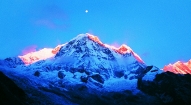
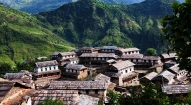
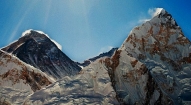
Day 01: Arrive Kathmandu International Airport- T I A (1300m) and transfer to hotel.
Day 02: After breakfast we set out for an extensive guided sightseeing tour of Kathmandu valley’s cultural, historical, religious and (world heritage) sites. During the course, we visit the famous Pashupatinath temple of Lord Shiva situated at the holy bank of River Bagmati where we will also observe the Hindu cremation ritual. We then proceed to the Boudhanath stupa, a major pilgrimage centre for the Buddhist faith which also is the largest of its kind in the world. We then have a short break for lunch followed by a visit to Swoyambhunath stupa also known as the Monkey Temple from where we can have a bird’s eye view of whole of Kathmandu valley. Following this we then proceed for a visit to Kathmandu Durbar Square, the oldest royal palace of Kathmandu and a UNESCO world heritage site. The whole are of Kathmandu Durbar Square is dotted with numerous fascinating Nepalese architect dating back many centuries. The site is also the home to Nepal’s living Goddess – Kumari, where we will also have the opportunity to experience firsthand this unique Nepali tradition. In the evening we will attend the welcome dinner hosted by Makalu Adventure with live Nepalese culture shows.
Day 03: Kathmandu ( 1310m) - Lukla (2827m) - Phakding (2652m) 5 hours
After a very early start, and an early take off from Kathmandu Domestic Airport, a 45 minute flight is all it takes to propel us into the Everest region of Nepal. The landing at Lukla (2800m) is spectacular and on arrival we are greeted by our sirdar and trekking crew who organise the luggage and hustle us off for tea. After a leisurely lunch we start the trek in earnest, setting off for a gentle walk to Phakding (2800m), a further 3 hours to the north. The trail leads through Lukla, past hotels, shops and airline offices to the edge of the Lukla plateauwhere the trail drops to meet the intersection of the Jiri trail at Chablung. From here the trail follows the Dudh Kosi north through the village of Ghat and then finally to Phakding where we spend the night.
Day 04: Phakding - Namche Bazar (3440m) 7 hours
From Phakding it is a steep ascent to Namche Bazaar- a prosperous market town and the administrative center for the Khumbu region. In Namche, one will often see Khampa Tibetans who have crossed over from Chinese occupied Tibet to trade with the Sherpa of the Khumbu. At Jorsale the trail enters Sagarmatha Nat'l Park. Visit the National Park museum situated on a hilltop above Namche. With good weather you will be rewarded with views of Everest, Nuptse and Lhotse.
Day 05: leisure (acclimatization) in Namche Bazaar:
We will rest a full day at Namche Bazar allowing our bodies to acclimatize to the altitude of 3440m. In the morning there is an option of walking up to the Everest View Hotel (3450m) while returning for lunch
Day 06: Namche – Thame (3800m), 4hrs:
The trek from Namche bazaar to Thame takes about 4 hours. From Namche the route turns into west and the trail is almost level as we head up the Bhote Koshi valley, once a popular trading route into Tibet. Along the walk we pass many prayer flags, Mani walls and carved stones, all indicative of the Tibetan Buddhist culture of this area. After descending to the Bhote Koshi, the trail climbs steeply to Thame. From here there are good views of the peaks of the Teng Kangpoche and Kawangde and to the north is the Nangpa La, the pass leading to Tibet. Thame Gompa is situated above the village overlooking the valley and is the site for spring celebration of Mani Rimdu Festival.
Day 07: Thame –Khumjung (3790m)
We leave Namche for the climb to the Sherpa villages of Kunde and Khumjung (12,400'). Khumjung, which is more traditional in appearance than Namche, is the location of the Hillary School, a primary and secondary school financed by the Himalayan Trust, the philanthropic organization established by Sir Edmund Hillary. There is also a gompa possessing a skull said to be of the yeti. We pause here for an acclimatization day
Day 08: Khumjung – Dole (4200m):
Leaving the main trail to Mt. Everest climb high on a ridge and then descend to the village of Phortse. From Phortse the trial leads through forest to Dole.
Day 09: Dole –Machhermo (4410m):
A steep but beautiful morning climb through pine, fir and rhododendron forest to Lhabama and Luza. After a leisurely afternoon trek, high above the river. Camp at Machhermo. Today’s trek is relatively very short so you are not exhausted and it also allows you enough time for acclimatization.
Day 10: Rest and Acclimatization or short optional hikes
Day 11: Machhermo –Gokyo Lake (second lake at 4750m)
This will be the first real day hiking in altitude above 4500 meters and the trekking today may be described as moderate at its most difficult section. However, the going is very slow (and in fact, you should keep your pace quite slow to avoid the exhaustion). The valley opens wide as the trail passes through Pangkha. Mt. Cho Oyu (8153m) dominates the skyline to the north as the trail leads up to the moraine on the left flank of the Ngozumpa glacier. The climb is steep to the first of the four lakes that lie in the Gokyo area but the trail levels off towards the second lake at 4750m. The settlement of Gokyo and Luza are typical high altitude temporary villages where the herders live when they bring their cattle up to high summer pasture (kharka) during the warmer months and leaving the lower pastures.
Day 12: Gokyo (4750m): Rest day
Today is a free day to explore the area around Gokyo or if you would like you can just take a full day of rest or relax. And for the enthusiasts, a rigorous day’s hike up the ridge above camp provides spectacular views of the Everest trinity: Nuptse (7889m), Lhotse (8511m), and Everest (8848m) as well as Makalu (8463m) looming to the east and Cho Oyu (8153m) to the north.
Day 13: Gokyo – Chyugima pass (5169m):
Today is the long and the most difficult part of the trek. The trail crosses the southern portion of the Ngozumpa glacier then climbs steady to a campsite on the 5169m at Chyugima pass.
Day 14: Cross Cho La (5420m) – trek to Dzongla (4730m):
A steep and challenging but non technical climb over rock, snow or perhaps ice with superb views links the glacial valley of Cho Oyu and Everest. Today we will cross the 5420m Cho la. Camp will be at Dzongla at 4730m, a high altitude summer pasture, directly beneath the north wall of Cholatse 6440m.
Day 15: Trek to Lobuche (4930m):
After a morning of rest, hike on a trail above Tsholo Lake and join the main Everest trail near the end of the Khumbu glacier. Camp at Lobuche 4930m.
Day 16: Lobuche – Gorekshep (5140m):
The trail from Lobuche follows the muide, a geographer’s name for the trough at the edge of glaciers lateral moraine. A tributary glacier has piled another moraine across the trail which has to be crossed giving a good view of Pumori. This section of the trek provides good views of the Everest group and Pumori form Gorekhshep and Kala Patthar.
Day 17: Gorekshep –Kala Patthar (5545m) – Lobuche (4930m):
Hike up early in the morning to Kala Patthar to see the stunning views of Mt. Everest and other surrounding peaks. If you still feel physically fit an optional hike to Everest Base Camp (5200m) can also be made and get back to Gorekshep or Lobuche for the overnight stay.
Day 18: Lobuche – Tengboche (3860m):
Trekking to Tengboche we leave behind the trekker’s aid post at Phirichhe 4240m. The Aid post is often staffed by western volunteer doctors supported by the Himalayan Rescue Association (HRA) who provide medical treatment and consultation to the trekkers and mountaineers. From here we continue down the valley to the lower altitude. Get into the valley to Tengboche, home to the famous Tengboche monastery and the main spiritual centre of the Khumbu region. The descent journey is adequately compensated by views of Mt. Ama Dablam and on a clear day Mt. Everest and other surrounding peaks. Ama Dablam means “mother’s charm box” and is named after the little box Sherpa women wear around their necks. It is also one of the most beautiful mountains in the Himalayas. Overnight at camp.
Day 19: Tengboche – Namche (3340m):
The trail then descends to the right flank of the Dudh Koshi valley to Namche bazaar. The descent is long but the journey is compensated by breathtaking mountain vistas. Camp overnight.
Day 20: Namche –Phakding (2610m):
We trek down along the gorge of the Dudh Koshi to the small village of Phakding. Overnight camp or lodge.
Day 21: Phakding – Lukla (2840m):
Trek further to the mountain strip to Lukla to catch our return flight to Kathmandu. Weather permitting our trek crew might prepare a farewell treat for us and we would be expected to joining the singing and dancing with them. Overnight camp or lodge, Lukla.
Day 21: Lukla – Kathmandu
Fly to Kathmandu with the remaining day completely at leisure.
Day 22: Sightseeing tour of Bhaktapur and Patan. Return to Kathmandu for overnight.
Day 23: Final departure
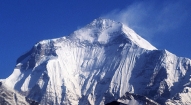
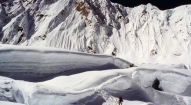
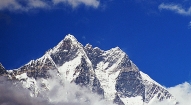
- All ground transfer by private vehicles as per our itinerary
- Fine hotel –Thamel Eco Resort in Kathmandu (twin sharing including b/f and taxes)
- Welcome dinner with live Nepalese cultural program hosted by Makalu Adventure
- Guided sightseeing around Kathmandu world heritage sites including all entrance fees
- All domestic airfares (Kathmandu-Lukla- Kathmandu)
- Organized camping trek arrangements including all high quality German Salewa / UK Super Quasar camping equipment such as two men tent, kitchen tent, dining tent, toilet tent, tables, chairs, mattresses, hot water bags, pillows, inner sheets etc.
- Everyday three times hot meals while on trekking prepared by our professional kitchen crew.
- National park, conservation area permit and fees
- Guide, porters, their daily wages, insurances with all necessary lodging / fooding arrangements.
- Administration service during rescue and evacuation (if required)
- Down jacket, sleeping bags, Trekking kit bag/duffel bag, trekking map and trekking Poles
- A comprehensive medical kit
- All government and local taxes
- Nepal visa fee.
- Airport taxes.
- International airfare to and from Kathmandu.
- Excess baggage charges.
- Lunch and evening meals in Kathmandu.
- Extra night accommodation.
- Travel and rescue insurance.
- Personal expenses (phone calls, laundry, bar bills, battery recharge, extra porters, bottle or boiled water, showers etc).
- Rescue and evacuation if required.
- Tips gratitude





